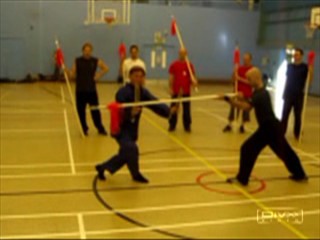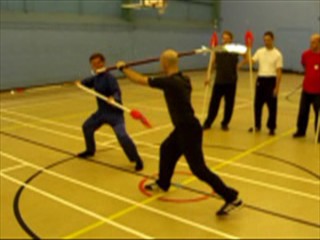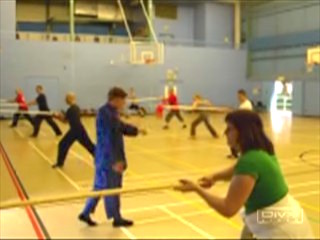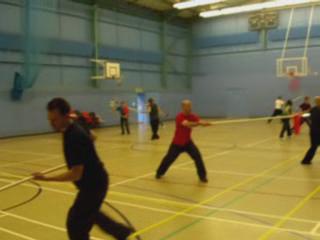TRAVELING DRAGON THIRTEEN-TECHNIQUE SPEAR
OVERVIEW
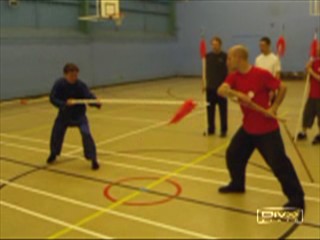
The spear against the three-sectional staff
The King of Weapons
The spear is considered the king of weapons because the spear shoot is technically the most difficult attack to defend against. Why is this so? It is because being light and long a spear can be speedily pulled back for another shoot after one is made.
If an opponent attempts to dodge a spear shoot, a skillful spearman would turn the spear at the opponent and shoots him again or slices him with the spear blade. If an opponent attempts to deflect the spear, the spearman would circle the spear around the opponent's weapon.
You can view all the videos by clicking the pictures or the captions below
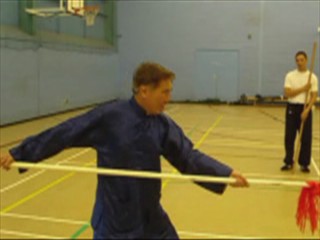 1. Introducing the Traveling Dragon Thirteen-Technique Spear
1. Introducing the Traveling Dragon Thirteen-Technique Spear
There are two main types of spears, namely the metal spears and the flower spears. The set presented here is a composite set from “Traveling Dragon Spear” and “Thirteen-Technique Spear”, with some patterns from “Cross-road Throat-Locking Spear”.
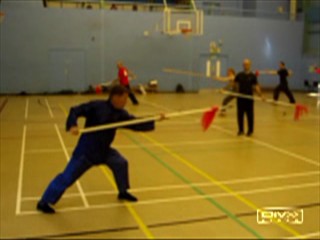 2. The Formidable Circling and Shooting Techniques of the Spear
2. The Formidable Circling and Shooting Techniques of the Spear
The spear shoot is considered by many kungfu practitioners as the most formidable weapon attack because it is technically the most difficult to defend. The spear shoot is enhanced by the circling technique. The circling and shooting are often used together, making the combined movement a highly effective way for both attack and defence.
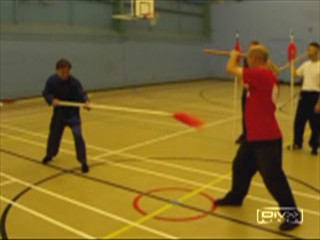 5. The Spear against the Versatile Three-Sectional Staff
5. The Spear against the Versatile Three-Sectional Staff
The three-sectional staff is a highly versatile weapon. It can be used as a short weapon, a long weapon, a single weapon, a double weapon, a soft weapon or a hard weapon! When you block one part of the three-sectional staff, another part may hit you.
 6. Circling and Shooting against the Three-Sectional Staff
6. Circling and Shooting against the Three-Sectional Staff
Circling and Shooting are two essential techniques of the spear. Although a three-sectional staff is very versatile, you can use just these two techniques against it. What other spear techniques you can think of that are useful against a three-sectional staff?
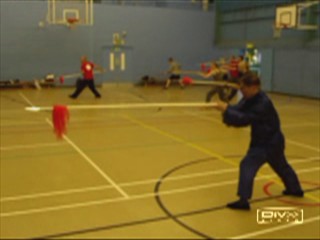 8. Sharing Secrets of the Spear
8. Sharing Secrets of the Spear
Many secrets concerning the spear are shared here. The secret concerning the three external harmonies and the three internal harmonies is discussed. Combat applications of the spear that many masters keep as top secrets are revealed.
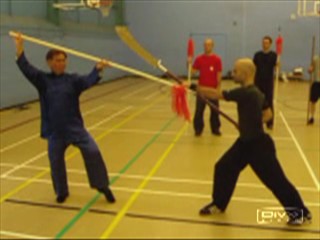 11. How would you Counter the Downward Chop of a Big Knife?
11. How would you Counter the Downward Chop of a Big Knife?
How would you respond to the downward chop of a Big Knife? Blocking it, like what is shown in some kungfu movies, is an inferior response. It may result in the spear being chopped into two. Two superior responses are demonstrated in this video series. The first one is merciful, merely slicing the attacker's hand. The second is deadly, resulting in serious or fatal injury to the opponent.
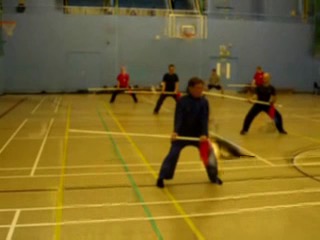 12. Using the Spear like a Dagger or a Staff
12. Using the Spear like a Dagger or a Staff
A skillful exponent not only can shoot a spear in different ways, he can also use his long spear like a short dagger for close-body fighting. If he does not want to cause serious injuries on his opponents, he may use his spear like a staff. Or he may use an opponent spear to hurt the opponent himself. The video series here records some of these lessons.
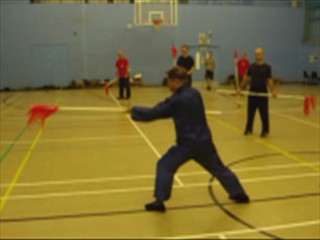 13. The Spear Thrust and the Spear Shoot
13. The Spear Thrust and the Spear Shoot
Besides piercing an opponent with the shoot-technique, you can also pierce him with the thrust-technique. The thrust is “harder” than the shoot. Therefore it is preferred when piercing through hard objects, like an amour.
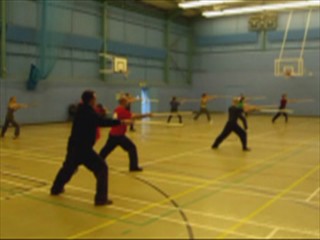 14. Reviewing the first Five Sequences of the Set
14. Reviewing the first Five Sequences of the Set
It is incredible but the course participants learned the Traveling Dragon Thirteen-Technique Spear Set in just one day. There are eight sequences in the set. The video series here record them reviewing the first five sequences that they have just learnt. The remaining three sequences will be shown later.
 15. Outside-Door and Inside-Door Applications
15. Outside-Door and Inside-Door Applications
In kungfu circles in the past, combat applications could be classified as “outside-door” or “inside-door”. “Outside-door” applications were meant for public demonstrations outside the doors of the school. “Inside-door” applications were taught only to trusted students who had been accepted inside the school doors.
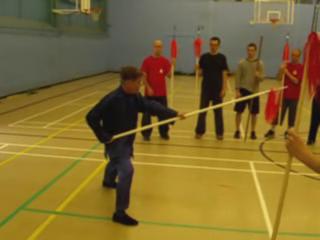 16. Covering the Four Corners against All Attacks
16. Covering the Four Corners against All Attacks
There are two main ways to classify weapon attacks — coming from four directions, and coming at three levels. From the four directions, weapon attacks may come from the top left, top right, bottom left and bottom right. From the three levels, weapon attacks may aimed at your top, middle or bottom.
 17. Remarkable Achievement at the Weapon Course
17. Remarkable Achievement at the Weapon Course
Our course participants understood the three harmonies of feet, body and hands that enabled them not only not to sustain injuries from their training but also attain maximum result with minimum effort. They also learned and practiced combat applications of basic patterns so that their performance became meaningful to them. They could relax and generate an energy flow in their peformance so that they were not tired even after some hours of vigorous practice.
 18. Making Flowers with the Spear
18. Making Flowers with the Spear
“Khuen fa” can be tranlated as “making flowers”. There are different ways of “making flowers”, but all of them have the common factor of your weapon spinning fast around yourself. It is not an easy technique to learn, but the video clips and explanations below will simplify the learning process.
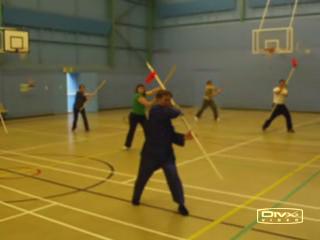 19. Various Ways of Making Flowers
19. Various Ways of Making Flowers
Although “Making Flowers” is an important technique, it is not easy. Hence, we spend quite some time practicing this important technique. We explore the numerous ways to make flowers, such as making “open flowers” and “close flowers”, using the left-hand spear or the right-hand spear, crossing hands on the left side or the right side, and moving in different stances.
 20. Confusing your Opponents with Variations and Changes in Making Flowers
20. Confusing your Opponents with Variations and Changes in Making Flowers
“Making Flower” is a very useful composite technique comprising of a few different techniques. If you are skillful in applying this composite technique, it can be very formidable for both attack and defence. As there are numerous different ways of making flowers, you can confuse your opponent by changing from one way to another, often without your opponent realizing the subtle changes.
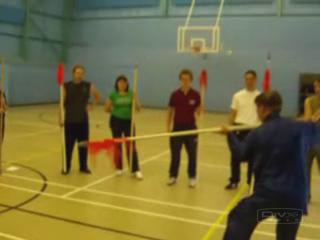 22. The Difference between Patterns and Techniques
22. The Difference between Patterns and Techniques
Some practitioners may perform spear patterns well but may not know spear techniques. What is the difference between a pattern and a technique? If you use a Bow-Arrow Stance and shoot your spear straight ahead, this form is a pattern and is called “Green Dragon Shoots Pearl”. The way the spear is applied for combat is a technique, and this particular technique is called “spear”.
 23. The Thirteen Techniques of the Traveling Dragon Spear
23. The Thirteen Techniques of the Traveling Dragon Spear
The Traveling Dragon Thirteen-Technique Spear is so called because the movements of the spear are like those of a dragon and there are thirteen main techniques. As a dragon, the movements are flowing and graceful but powerful. The thirteen techniques are "circle", "spear", "sweep", "flick", "wave", "brush", "lift", "ground", "return-horse", "sideways", "slanting", "shake head", and "make flowers".
You can also view all videos here
A picture-series and a video series of the Thirteen-Technique Spear can be found
here
and here
Review of UK Summer Camp 2007 Weapon Course
LINKS




